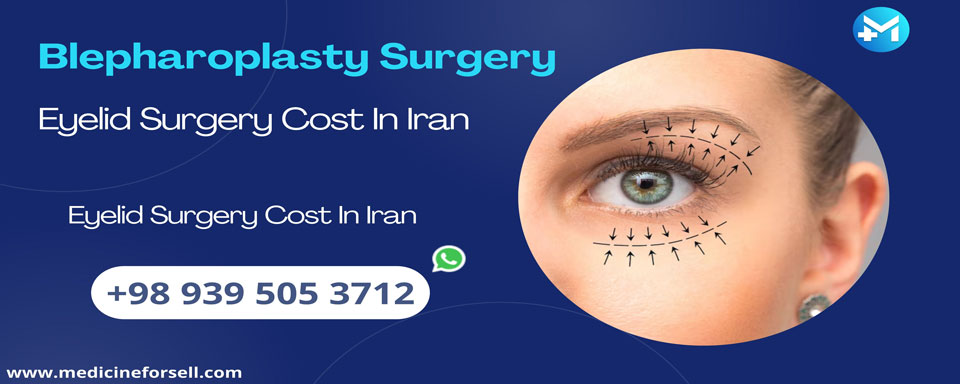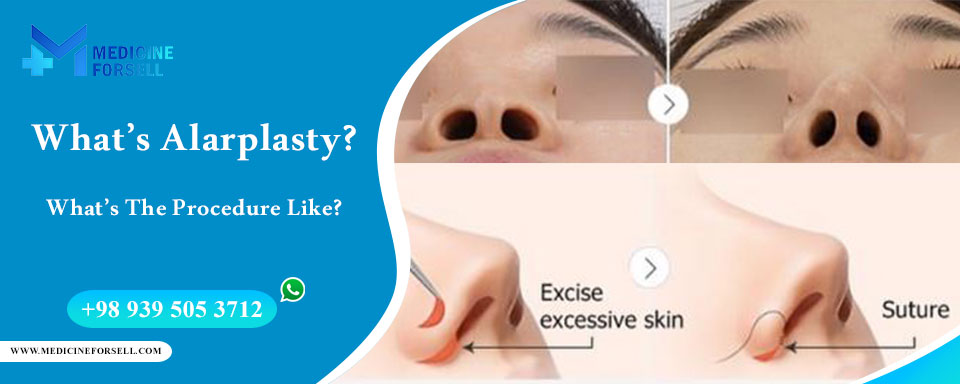

Blepharoplasty Surgery In Iran
Eyelid Surgery Cost In Iran
Skin often loosens and sags around the corners and edges of the eyes as it ages. Fat deposits may also begin to shift, giving the eyes a puffy appearance. A blepharoplasty involves a surgeon removing excess skin and fat and tightening the area to restore a more youthful appearance. A surgeon may also perform the procedure to remove skin that interferes with vision. It has no effect on the brows and does not lighten dark under-eye circles. This article discusses blepharoplasty, including procedures, risks, and outcomes.
What Is a Blepharoplasty?
Blepharoplasty is a procedure that involves the upper or lower eyelids. When drooping skin gets in the way of the eyes, it can help to improve vision. Blepharoplasty is a cosmetic procedure that surgeons can use to tighten or remove skin around the eyes.
A blepharoplasty can fix:
. drooping or draping skin that prevents normal vision
. sagging skin around the upper eyelid that creates an unnatural fold
. fatty deposits underneath eyelid skin
. dark circles beneath the eyes
. drooping lower eyelids that reveal white below the colored iris
. extra skin on the lower eyelid
Why Would a Person Get a Blepharoplasty?
There are two common reasons why someone may choose blepharoplasty.
Improving vision
In some cases, sagging or excess skin around the eyes can obscure a person’s vision. This skin can hang unnaturally in the contour of the eye and prevent normal vision, particularly from the side of the eye. Getting a blepharoplasty to remove the excess skin may help to improve a person’s vision in this case.
Cosmetic preference
A person may also consider blepharoplasty to improve the appearance of their eyelids and the skin around their eyes. Skin loses its ability to produce and support collagen in the eyelids and upper eyes as it ages. With age, the fibers that connect the muscles that control the eye can detach, resulting in eyelid drooping. Fat can also migrate into the eyelid tissue, giving it a puffy or droopy appearance. Blepharoplasty can remove excess skin and fat as well as tighten loosened muscles, potentially giving the patient a more youthful appearance.
Types Of Blepharoplasty
There are two types of blepharoplasties — a lower blepharoplasty and an upper blepharoplasty. Surgeons sometimes perform them together.
A lower blepharoplasty focuses on the area below the eye. A surgeon will make a cut below the lower eyelash line and tighten the skin below the eye.
An upper blepharoplasty involves altering the skin and muscle above the eye. The surgeon will make a cut where the new crease of the eyelid should be.
What To Expect from a Blepharoplasty?
A person will have several consultation appointments before the surgeon performs any type of surgical procedure. In the case of a cosmetic procedure, the surgeon and the patient will go over the desired outcomes in great detail. A person should be very open and specific about their expectations from the procedure. Both parties will collaborate to ensure that the person thoroughly considers their desired outcomes and understands the risks of the procedure.
Once both the surgeon and the patient are satisfied with the plan, a convenient date for the surgery will be set. Surgery usually takes 1-2Trusted Source hours, and patients can go home the same day. Any makeup and contact lenses must be removed prior to surgery.
Before the procedure, a healthcare professional may insert an intravenous (IV) line into the person’s arm. This will provide sedatives, fluids, and medications during the surgery. Most individuals will receive a general anesthetic, which means they will be unconscious during the procedure. They will not feel any pain.
The surgery may involve a lower blepharoplasty, upper blepharoplasty, or both. The procedures are different for each, and the techniques may also differ between surgeons. The surgeon and patient will discuss the techniques prior to the surgery.
Lower blepharoplasty
For a lower blepharoplasty, a surgeon will choose a site to make an incision. This may be along the lower lash line or inside the lid along the mucosa. Depending on the specific case plan, the surgeon may remove or reposition fat beneath the eye to get the desired effect. In line with the agreed procedure, the surgeon may perform a canthopexy or canthoplasty to fix a drooping lower lid.
During a canthopexy, they fix the outer corner of the eye to the underlying facial structure to prevent further drooping. A canthoplasty is a more involved procedure that requires more intricate surgery to remove and reattach sagging skin.
Upper blepharoplasty
During an upper eyelid blepharoplasty, the surgeon makes an incision where the new crease of the eyelid should be. They remove any excess skin and additional fat from above the eyelid before closing the incision.
Sagging or drooping skin around the eyelids may also happen due to brow ptosis. If so, the surgeon may arrange a separate procedure called a brow lift in addition to an upper blepharoplasty.
Recovery
After the surgery, healthcare professionals will take the individual to a recovery room, where they will gradually wake up from the anesthetic. During this time, it is normal to feel sleepy and sometimes nauseated. The person can also have difficulty seeing at first. A family member may be able to visit at this point.
A surgeon or other healthcare professional can prescribe medication to help with any pain. They may suggest placing ice packs on the eyes to help reduce bruising and swelling. The person who underwent surgery will not be able to drive home themselves. A friend or family member must be present to make sure the person gets home safely. Bruising, swelling, and blurry vision will be normal for the first week or two. A person should follow all the surgeon’s aftercare instructions, including:
. using ice packs on eyes
. regularly cleaning the incisions
. wearing sunglasses
. avoiding makeup and contact lenses
. avoiding swimming or getting the face wet
. avoiding strenuous activities
. avoiding driving while taking medications
Blepharoplasty Surgery Results
It may take 10-14 days for bruising and swelling to go away, but complete healing may take several months. Following the doctor’s post-operative instructions will help you heal faster. While the skin naturally loses elasticity over time, the results of blepharoplasty should last for years. Making sure the person has adequate sun protection, such as sun lotion, may help the results last longer.
Blepharoplasty Surgery Risks
There are risks with any surgery. A few complications that may arise with blepharoplasty include:
. dry eyes
. lagophthalmos, or “lid lag” — when the upper lid does not meet the lower lid
. ectropion, where the eyelid turns outward
. retrobulbar hemorrhage, or an increase in pressure due to bleeding behind the eye
. Other potential complications and side effects include:
. blurred or double vision
. asymmetrical eyes
. hematoma, or blood pooling under the skin that usually subsides in a few weeks
. scarring
. injury to eye muscles
. lower eyelid drooping
. lower eyelid retraction, which shows the whites of the eye
. temporary problems with vision
Any surgery carries a risk of:
. bleeding
. blood clot
. infection
. allergic reaction to anesthetic
With any cosmetic procedure, there is also a risk that the person will not like the outcome. A person can try to avoid this by having clear and open communication with the surgeon performing the blepharoplasty. When a person talks with the surgeon who will be performing the procedure, they should ask about their operating history and whether the surgeon has had any complications with this type of surgery before. The surgeon should discuss the likelihood of complications with the patient so they can make an informed decision.
Who Can Get a Blepharoplasty?
Not everyone is a good candidate for blepharoplasty. The surgeon will conduct a full medical evaluation to determine if surgery is a viable option. The best candidates are:
. those without medical conditions that prevent healing
. nonsmokers
. those with realistic goals
. those without serious eye problems
Drooping of the skin and muscles of the forehead can cause drooping of the eyelid. This requires a different surgical procedure that the surgeon may discuss.
Blepharoplasty Surgery Cost
According to the American Society of Plastic Surgeons, the average cost of cosmetic eyelid surgery was $4,120 in 2020. This does not include the cost of anesthetic, operating room facilities, or other expenses such as prescriptions.
Blepharoplasty Surgery Cost in Iran
The cost of eyelid surgery in Iran varies depending on several factors, such as the surgeon’s experience, the type and extent of the surgery, the clinic’s location and reputation, and the patient’s condition and expectations. However, on average, you can expect to pay around $1100 for eyelid surgery in Iran, which is much lower than in other countries like the US ($3,000-$5,000), Canada ($2,500-$4,000), or Australia ($3,000-$6,000).
Final Word
In conclusion, if you’re considering eyelid surgery, Iran is an excellent choice for high-quality treatment at an affordable price. With experienced surgeons, modern facilities, and a wealth of cultural experiences to enjoy, you can have a safe and enjoyable trip while achieving your desired cosmetic results.
About Medicine For Sell
Medicine For Sell is an online medical tourism platform where you can find the best doctors and plastic surgeons in Iran. The price of Blepharoplasty Surgery in Iran can vary according to each individual’s case and will be determined by an in-person assessment with the doctor.
For more information about the cost of Blepharoplasty Surgery in Iran and to schedule an appointment in advance, you can contact Medicine For Sell consultants via WhatsApp number +98 939 505 3712. This service is completely free.
Source:




